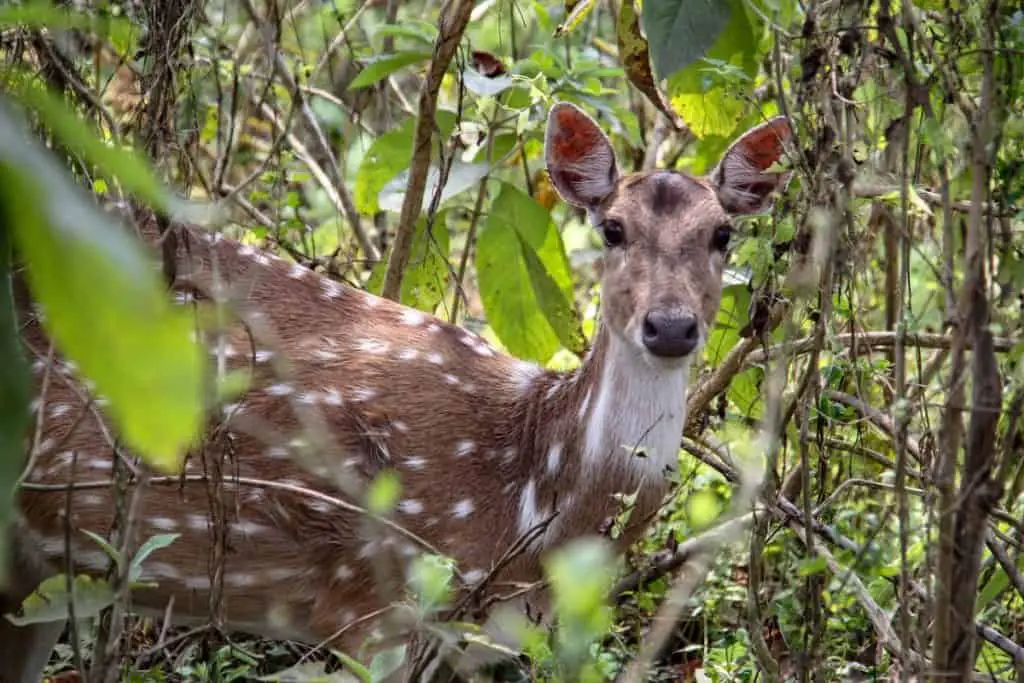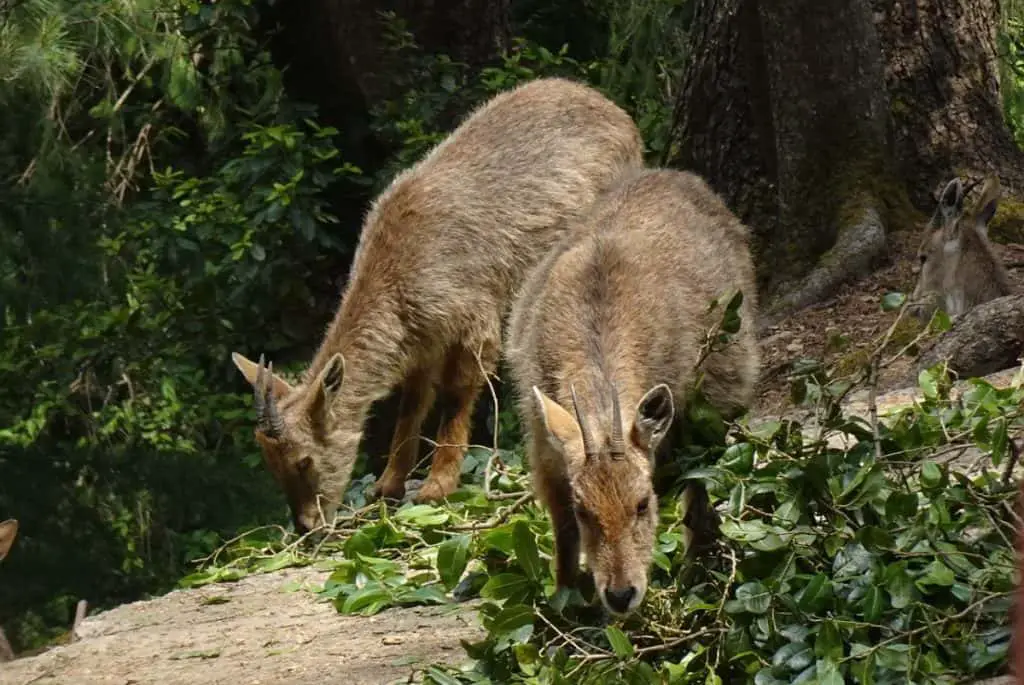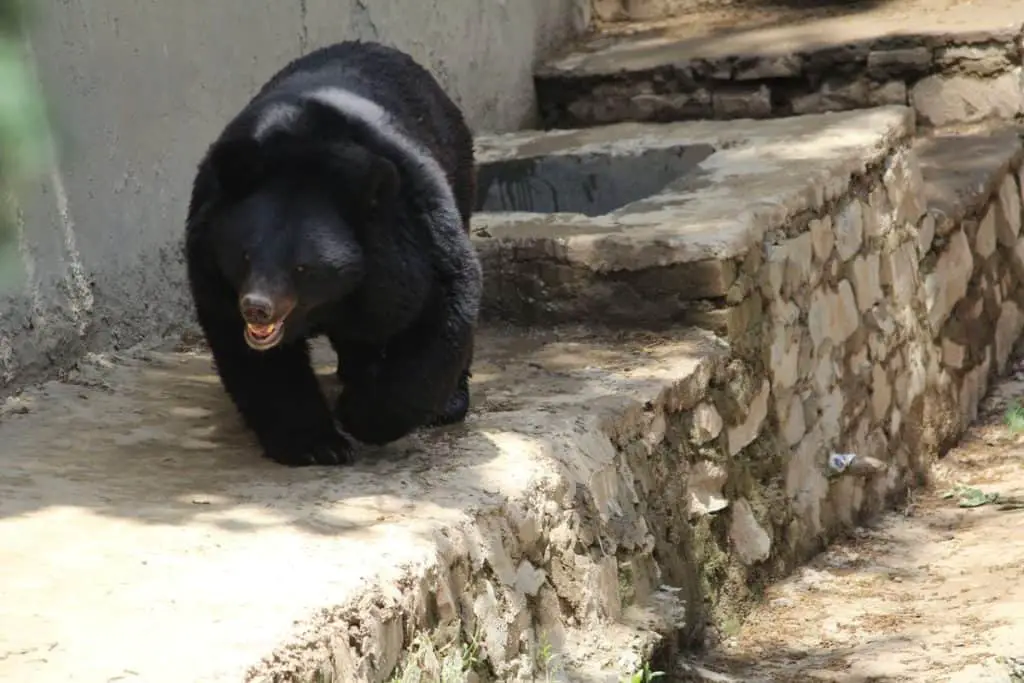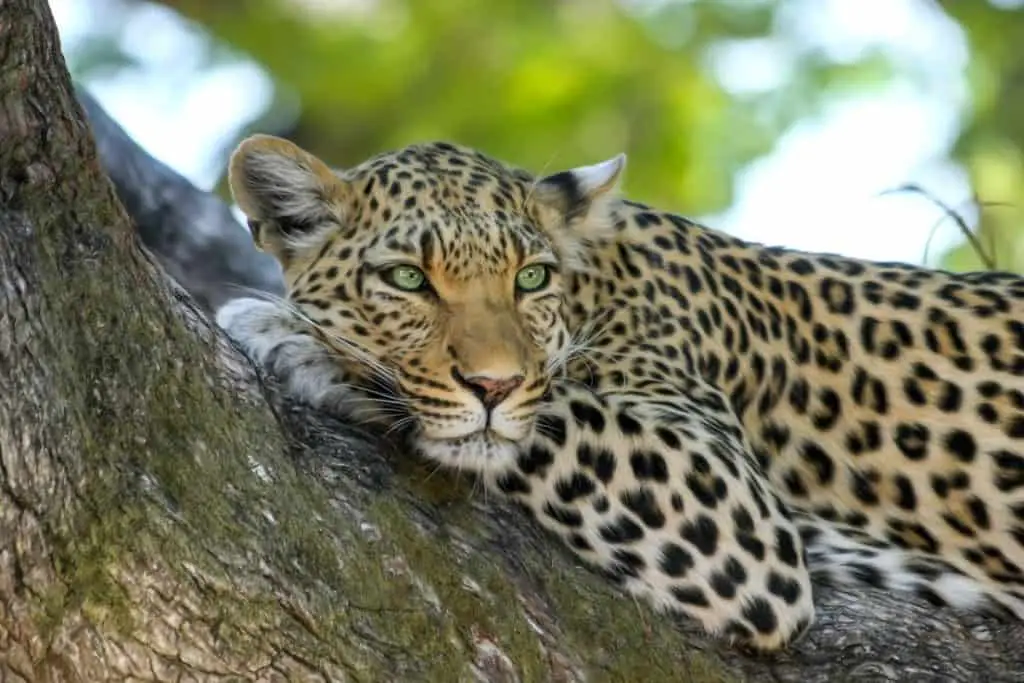Indochina extends from Burma through southern China, east to Taiwan, and south to Thailand, Cambodia, and Vietnam.
Indochina is home to approximately 500 native mammal species and 1,300 species of birds. There are over 500 reptiles, and over 300 amphibian species. There are many endemic species in Indochina.
In addition to habitat damage and losses, wars and hunting pressures encouraged by a proliferation of firearms have devastated wildlife in parts of Indochina.

Musk Deer
The Musk Deer is widely distributed in the montane forests of Asia. This deer is intensively hunted for its musk, a secretion produced by the glands of the male, and used in perfume and Chinese medicine.
As a result, the species is diminishing, and musk has become one of the most valuable animal products in the world. Musk can, however, be extracted without killing the deer, and farms have been set up for this purpose.
Asian Elephant
One of the best-known animals in the area is the endangered Asian Elephant, which is closely linked with mythology, religion, and culture. It once had a huge range, extending as far west as the Tigris and Euphrates, north in China to the Chang Jiang river, and south to Sumatra.
Unlike its African counterpart, the Asian Elephant has been used extensively by people over the centuries for any jobs requiring enormous strength, such as the felling of trees and the transportation of logs.
The earliest records of tame elephants in the Indian subcontinent date back to the third millennium BC. Although once abundant, its numbers have been severely reduced, and its populations are somewhat fragmented. Habitat loss is the most serious threat, although ivory poaching is also a major problem.
Pangolins
The three Asian species of pangolins (scaly anteaters) are threatened by heavy trapping for their scales and for their flesh, which is considered a delicacy. All occur in Indo-China: the Chinese Pangolin in forested mountains from Nepal east to southern China and Hainan, the Indian Pangolin in the Indian subcontinent and China, and the Malayan Pangolin with a range extending into the Sundaic subregion.
Giant Nuthatch
Deforestation is the chief threat to numerous montane forest bird species in Indochina. For example, the Giant Nuthatch, the largest of a family of small birds, now has a very restricted range. It is rare and local in Thailand, in Myanmar, it lives in the Mogok Hills, and there are records from China.
Hornbills can also be viewed in Mainland Southeast Asia. They are vulnerable to deforestation because they feed on fruit and small animals in the canopy and require mature trees.

Common Goral
Another animal of the forested mountains is the Common Goral, a goat antelope with short horns. It occurs from the Himalayas east to Burma, northern Thailand, and north through eastern China to southeast Siberia, but is declining in many areas because of hunting for sport.
Rufous-necked Hornbill
Their relatively large size makes them susceptible to hunting. The Rufous-necked Hornbill, which used to occur from Nepal east to Vietnam, is one of the most threatened, although its numbers are increasing. Although still fairly common in southern Bhutan, it is now extinct in Nepal and rare and declining in the rest of its range.
Gaur
One of the most impressive animals of the tropical forests is the Gaur, huge wild cattle which may have horns as long as a meter (31/4 feet) and weigh up to 1,000 kilograms (2,200 pounds).
The Gaur was once found from India east to southern China and south to peninsular Malaysia, but now it only survives in disjunct populations. Its numbers have been seriously diminished by extensive forest losses, indiscriminate hunting, and diseases caught from domestic cattle.

Asiatic Black Bear
The major factor causing the decline of the Asiatic Black Bear is poaching for its gall bladder for use in Chinese medicine, but it is also affected by forest destruction. The Asiatic Black Bear had a wide range in Asia’s forested hills and mountains, from the Soviet Far East south to Thailand, Vietnam, Cambodia, and west to Pakistan. Its numbers are now greatly reduced, and it no longer occurs in many parts of its former range.
Kouprey
Another Indo-Chinese species of wild cattle is the Kouprey, one of the world’s rarest and least known mammals. The Kouprey’s range is centered on Cambodia and extends into southern Laos, eastern Thailand, and Vietnam. However, it has not been seen since 1988 and could be extinct.
Prolonged warfare in much of its range, hunting for food and its horns, and a naturally low reproductive rate all contributed to its decline.

Leopard
The Leopard is another very widespread Asian species at risk. Formerly it ranged throughout Africa and from the Near and Middle East to Siberia and south to Java.
An adaptable animal, the Leopard inhabits high mountains and coasts, tropical forests, and deserts. However, most of the Leopard’s Asian populations are now endangered due to persecution over centuries for its valuable skin.
Chinese Giant Salamander
Also confined to China is the Chinese Giant Salamander, which frequents mountain streams at over 1,000 meters (3,300 feet) in the center and southwest. This is the world’s largest living salamander, growing up to 180 centimeters (71 inches) long, it is considered a great delicacy and has become highly endangered.
Giant Catfish
The Giant Catfish is one of the world’s largest catfish, reaching about 3 meters (10 feet) and weighing 300 kilograms (660 pounds). It migrates several thousand miles from Cambodia to spawning grounds in southern China and is seriously affected by dams that prevent it from moving upstream. In addition, it is valued for its size and high-quality flesh and is threatened by overfishing.
